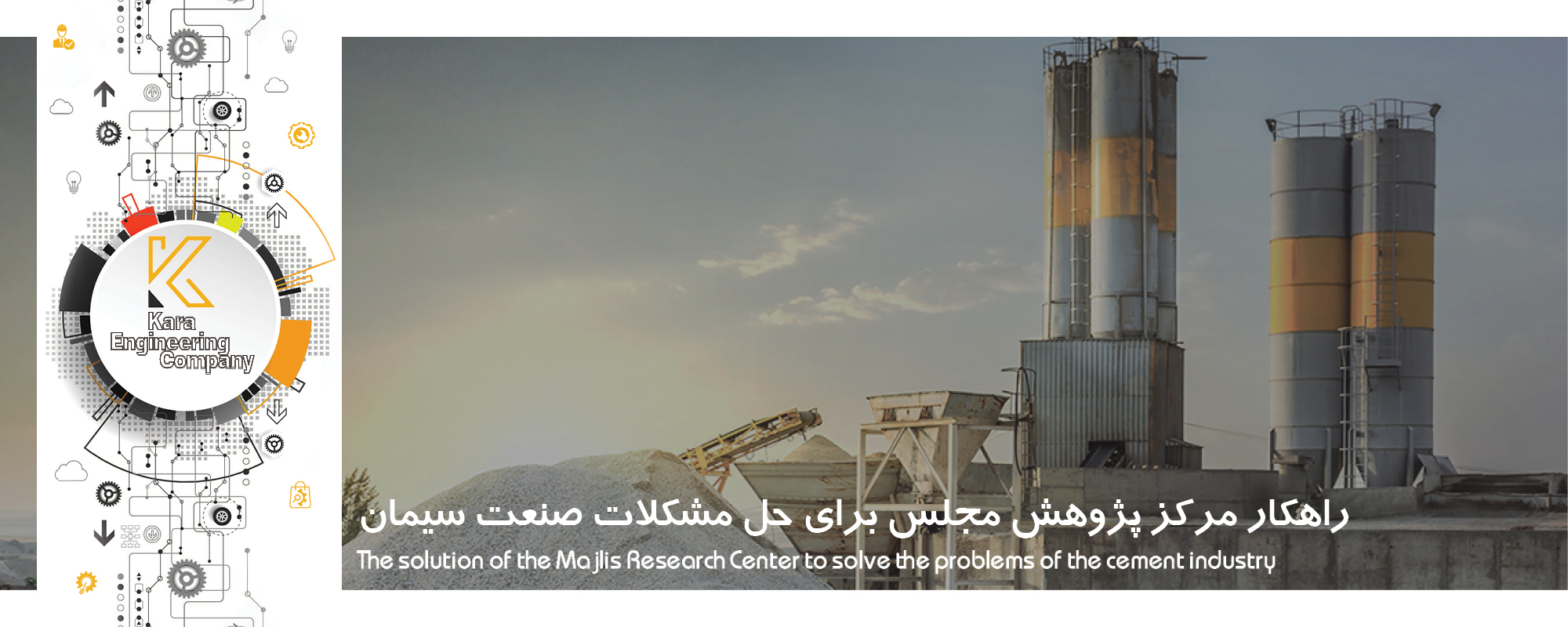
The report of the Majlis Research Center states:
At first, cement plants were completely purchased from other countries (such as the Soviet Union, Romania, Germany, Czechoslovakia), but later, with the country's acquisition of the technical knowledge to design and build these units, the design and implementation of cement plants were completely carried out in the country.
The average amount of investment needed to build a cement factory with a capacity of one million tons is about 150 million dollars. Cement factories were state-owned until the last two decades, and the pricing and distribution of this product was done by the government and distribution cooperatives.
After the cement factories were handed over to the private sector (both the real private sector and other public and quasi-governmental institutions), the way of managing cement units and its distribution network faced changes, but the shadow of the government's mandated pricing for cement continued until now; Until, with the first offering of cement in the commodity exchange in June 1400, the price of cement was discovered based on market supply and demand mechanisms.
Transportation and export of cement
There is no economic justification for transporting and exporting cement over long distances. Therefore, in countries that have mineral resources needed for cement production, the construction of a cement factory is to meet the needs of local markets (up to a maximum radius of 400 km).
In the cement production process, first the clinker product is produced and after grinding it, cement is obtained. Countries that do not have the necessary mineral resources or technology to produce cement generally import the clinker intermediate product and turn it into cement after a grinding step.
Cement production
According to the country's policies in the past decades, including the development of large construction projects such as construction, dam building, Mehr housing project, as well as the vision of the 1404 horizon of the country based on an annual economic growth of 8%, extensive licenses have been granted to cement production units.
It is expected that according to the licenses issued for cement factories, the country's nominal cement production capacity will reach 100 million tons in 1404.
Currently, Iran is the 11th largest cement producing country in the world. China, America and India are the three largest cement producing countries in the world. Currently, no license is issued for new cement production units in the country.
The price of cement
The price of cement in regional markets in recent years has been on average 60-70 dollars per ton (equivalent to 1,625 tomans per kilogram, including 25,000 tomans).
This is despite the fact that the selling price of cement in the country (approved by the Ministry of Industry, Mining and Trade) in recent years has been around 10-15 dollars per ton (equivalent to 5,312 tomans per kilogram, including 25,000 tomans).
Intermediaries in the cement industry
The presence of intermediaries in the cement industry, both in the field of domestic sales and in the field of export, is considered one of the biggest challenges of this industry. Intermediaries buy cement from the manufacturer at the government-approved price at the factory door and sell it in the market including the cost of transportation and profit.
Therefore, the profit from the price gap between the price of cement at the factory door and its price in the market flows into the middlemen's pockets. The important role of intermediaries is because with their financial power, producers sell their products in cash to intermediaries.
This is despite the fact that the real consumers are not able to buy cash from the factory door and in a high amount and are forced to provide the cement they need through intermediaries and then distributors. In recent years, due to the increase in the price of transportation as well as the materials needed for packing cement (cement bags), some intermediaries have taken profit-seeking measures, and the reform of the distribution system of this basic commodity in the country has received more attention. In the export sector, in the past, Iranian and non-Iranian intermediaries (merchants) used to buy cement at an approved price from the factory in rials and export it in foreign currency or rials. The country did not return that after the reform of foreign exchange policies by the central bank and also monitoring the process of issuing commercial cards, this problem has been solved to a large extent and currently cement producers are also exporting their products.
Challenges of the cement industry
The cement industry of the country is facing many structural challenges due to the incorrect policies of the Ministry of Industry, Mines and Trade. The most important challenges of this industry can be the excess production capacity due to the issuance of excessive permits for the construction of cement units in excess of the country's needs, the economic justification of not having exports and also the pricing system. The order of this product pointed out. These two factors have caused the prospect of the development of the cement industry to face uncertainties.
The interesting thing to note is that despite the development of the cement industry and production in excess of domestic needs and the pricing mandated by the Ministry of Industry, Mines and Trade, the country has been facing the problem of cement supply and price increase at some points, and the end consumers are not able to easily access and With the approved price, they have not produced cement in the country.
The supply of energy at a subsidized price to cement units in order to prevent the increase in the price of cement caused cheap sales and negative competition between producers and exporters due to the existence of profit margins, and the target export countries (Iraq and Afghanistan) imposed tariffs or bans on cement imports. Iran take action.
Examining the structural problems of the cement industry
In 2017, the Research Center of the Islamic Council, in a comprehensive report, investigated the structural problems of the country's cement industry and proposed to activate the internal and export ring of the commodity exchange for the domestic sale and export of cement in the shortest possible time, but the government is significantly late. Finally, in June 1400, he issued a license to supply cement in the commodity exchange
According to this report, in July 1400, the sudden power cut of the cement producing units or the imposition of unprofessional regulations for the cement producing units to supply electricity and their activities has caused a huge drop in cement production in the country. The same issue, along with the supply of cement in the commodity exchange and the discovery of its price based on the mechanisms of market supply and demand, has caused a jump in the price of this product in the country.
Solutions to solve cement industry problems
The report of the Majlis Research Center has listed the problems of the country's cement industry and presented solutions, such as the cooperation of the Ministry of Energy with the Ministry of Industry, Mining and Trade and the specialized associations of the cement industry in order to manage electricity consumption in this industry through the voluntary closure of the country's cement units (in order to carrying out repairs) in the summer season and at the same time preventing cement supply from being affected in the market by considering suitable incentives for producers.
Another solution of the Majlis Research Center is to revise the electricity supply plan and the activities of the country's cement factories based on the technical specifications of the equipment and machinery of the cement factories, so that these factories can operate with a percentage of their demand (at least 70 percent). and not face the problem of supplying clinker for cement production and supply to the domestic market. The current plan announced by the Ministry of Energy to supply electricity to non-professional cement producing units has led to the stoppage of the production of these units.
Ending mandatory cement pricing
Also, the Ministry of Industry, Mines and Trade should play its regulatory role in regulating the country's cement market, in such a way that it ends the mandatory pricing of cement in the country and obligates all production units to supply a certain amount of cement weekly in the commodity exchange.
This issue, while clarifying the supply, demand and transaction of cement in the country, will eliminate the role of intermediaries in the trade of this product, and real consumers and distributors can obtain the stock exchange code and purchase cement directly from the commodity exchange.
Activation of the export ring
The report of the Majlis Research Center suggests that the export ring of the Commodity Exchange should be activated for the export of cement and clinker in order to prevent negative competition and dumping and to make export transactions more transparent.
The supervision of the Ministry of Industry, Mining and Trade on the warehouses of cement producers and distributors of the country through the comprehensive system of warehouses should be done to prevent the possible hoarding of cement and clinker by the producer or distributor.
Modifying the price of energy carriers in the cement industry
This report also gradually corrects the price of energy carriers in the cement industry (electricity and gas) in a five-year program (simultaneously with price discovery in the commodity exchange - price liberalization) with the aim of moving the country's cement factories towards upgrading technology, modernizing and renovating cement units. The title says another solution.
Considering the production of cement in excess of the country's domestic needs and the limited export markets, it is necessary to review the cement plans with physical progress of less than 40%, so that if necessary, they are stopped or their location is changed.
Consultation for policy and planning
According to the report of Industries, at the end of the Majlis Research Makz report, it is stated about the final solution:
any policy and planning for the cement industry of the country should be done in consultation with the manufacturers and related specialized associations and economic organizations of the country. And also to support the distribution cooperatives of cement and construction materials to make it possible to buy cement from the commodity exchange with the aim of shortening the hands of dealers and middlemen in the country's cement market, so that it is possible to monitor the supply of cement in the market.
 Translate
Translate